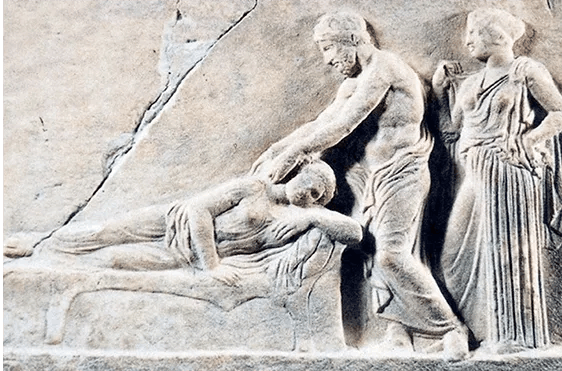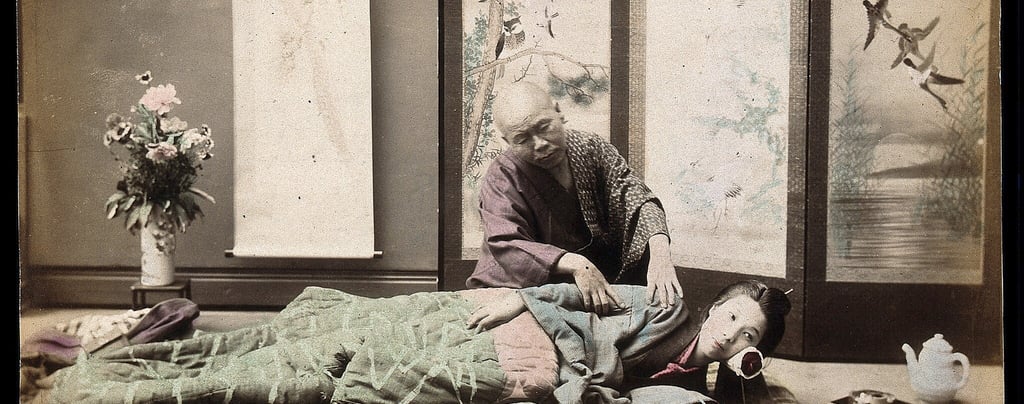Perceptions of the body in Eastern and Western bodywork (or why massage isn't a luxury!)
Claire Feldkamp


A few weeks ago I had a client tell me after their session that it felt like a luxury and indulgence to have a massage. That got me thinking again about our attitudes to bodywork in the West. Because, of course, I don’t believe that bodywork is a luxury, I believe that it's one of the most powerful forms of self-care we can practice and a necessity for us to live harmoniously in these beautiful vessels called our bodies!
To understand this perception of luxury, we need to look at the differences between Western and Eastern ideas concerning the body, health, healing and perceptions of touch. There are distinct differences in terms of how bodywork is understood, appreciated and integrated into daily life. These differences stem from different cultural, historical, and philosophical ideas about the body.
Eastern Philosophies: Holistic Healing and Balance
In Eastern cultures, massage is deeply intertwined with holistic health practices and traditional medicine systems, such as Traditional Chinese Medicine (TCM), Ayurveda, and Thai medicine. The primary focus of these systems is preventative with the aim of achieving balance and harmony within the body, mind and spirit.
The interconnectedness of everything
Eastern bodywork practices view the body as an interconnected system of energy channels. Techniques aim to restore the flow of energy (qi in Chinese, prana in Ayurveda) and balance the body’s internal systems. Chinese Tui Na focuses on stimulating acupressure points to promote energy flow. Shiatsu is a form of Japanese bodywork based on concepts taken from traditional Chinese medicine (qi meridians). Indian Ayurvedic Abhyanga uses warm oils to balance the body’s doshas (energetic forces). Thai Massage incorporates stretching and acupressure to release blockages in energy pathways (sen lines).
Bodywork in Eastern cultures is not merely a remedy for physical ailments but a preventive practice to maintain health and well-being. It is often combined with other modalities like herbal medicine, meditation, and dietary practices. Practitioners may incorporate mindfulness, breathing techniques, or even meditation during sessions to help their clients foster a deeper sense of relaxation and inner peace.
Massage is very much a way of life in the East, embedded in daily routines and cultural practices. Statistics show that almost 70% of people in Asia have some form of massage once a month or more. It is generally viewed as a lifelong health practice rather than a luxury or occasional indulgence. For example, in India, newborns and mothers are traditionally massaged daily to promote health and bonding. People working within the Indian stock market often run out during their daily work for a relaxing Indian head massage. Self-massage forms part of Chi Gong routines.


Western Philosophy: Science-Based and Symptom-Focused
In contrast, Western massage therapy developed within the framework of modern medicine and anatomy. The approach is more clinical, with a focus on physical structures such as muscles, joints, and connective tissues. Modalities like Swedish massage, deep tissue massage, and sports massage focus on manipulating soft tissues to improve circulation, reduce muscle tension, and alleviate pain.
Western forms of massage are therefore often viewed as something which we use to address a specific issue such as pain, injury or dysfunction within the body. For both practitioner and client, measurable outcomes are often a focus. So our conversations around bodywork are very much about pain reduction or making improvements to the range of motion in a joint, reducing tension in muscles or reducing inflammation.
This focus on outcomes is part of the reason why bodywork has historically been perceived as a luxury treatment. Massage is something we have when we are in pain and is not necessarily a tool that we can use to help prevent us from having pain. Only about 12% of people in the UK have a regular massage (once a month or more), which seems like an incredibly low number to me when you consider that over 20 million people suffer from some form of muscular-skeletal pain.
The best place to be, a blend of East and West
I believe that if we draw from Eastern and Western ideas we are in the right place. From Western ideas, we need to draw and develop a deep knowledge of anatomy, physiology and psychology. This knowledge underpins how we work, and gives us a framework to deal with disease or complex conditions like cancer. It helps us to understand how the body and mind work and therefore how different forms of bodywork, affect the body and mind.
Then from Eastern ideas, we draw on the idea of preventative care, working with energy, and massage as a tool for self-care and self-exploration. Regular bodywork is the key because this gives us time, space and continuity. We need these things to become comfortable with our bodies. When we are comfortable, those layers of complexity that form our perceptions of ourselves and the physicality of our bodies can start to be gently peeled away. We can start to see ourselves, our aches and pains, in different wa
The photo is a relief of a female patient being touched by Aesculapius, the Greek god of medicine, dated to the 4th century BC.
A Japanses women being massaged by a blind man